Pineapple Whip
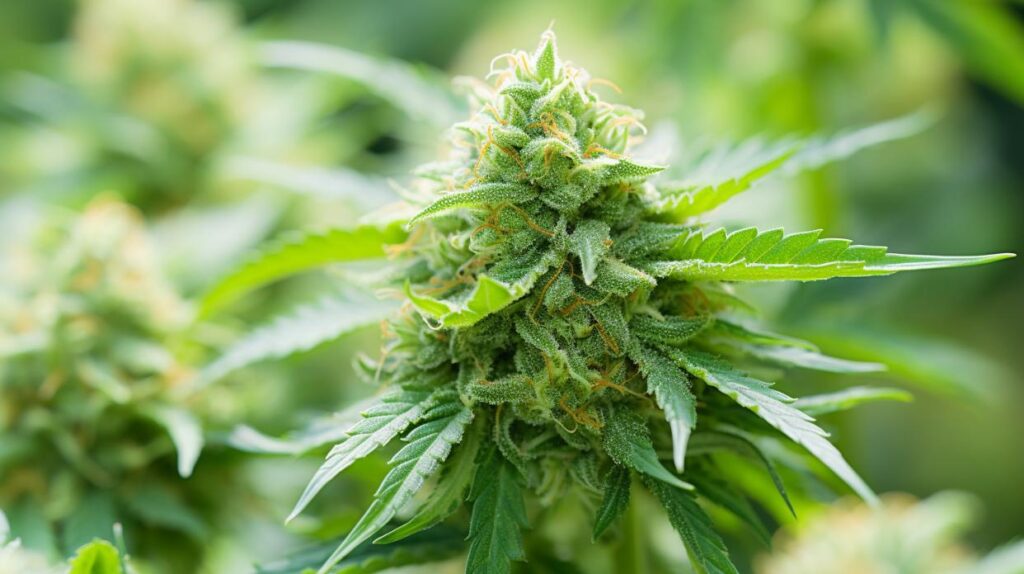
The Pineapple Whip strain, a hybrid deriving from Pineapple Express and Miracle Whip, emerges as a compelling subject within the cannabis community due to its intriguing genetic composition and notable cannabinoid profile. This strain’s balanced blend of 23.107% THC contributes to its cerebral and euphoric effects, which are often recommended for alleviating symptoms of stress and anxiety. The presence of Myrcene, Pinene, and Limonene not only enhances its tropical scent but also suggests potential anti-inflammatory and mood-stabilizing properties. Given these characteristics, one might ponder the breadth of therapeutic outcomes Pineapple Whip could offer across different user experiences.
Key Takeaways
- Pineapple Whip is a hybrid strain derived from Pineapple Express and Miracle Whip.
- It features a dominant terpene profile of Myrcene, Pinene, and Limonene, enhancing its tropical aroma.
- The strain has a THC content of 23.107%, suited for uplifting mood and alleviating symptoms of stress and anxiety.
- Cultivation requires warm, humid conditions, suitable for both indoor and outdoor environments.
- Common effects include mood upliftment and talkativeness, with dry mouth as a typical side effect.
Genetic Lineage
The Pineapple Whip strain emerges from a meticulously selected crossbreeding between Pineapple Express and Miracle Whip, aiming to combine their distinctive effects and flavor profiles. Pineapple Express, renowned for its potent, energetic high and a complex aroma profile marked by sweet, tropical nuances, contributes a robust genetic foundation. Its influence is evident in Pineapple Whip’s uplifting and euphoric effects, which make it an ideal choice for users seeking a burst of creativity and vigor.
Miracle Whip, on the other hand, brings a creamy smoothness to the table, tempering the intense energy of Pineapple Express with a more balanced, relaxing undertone. This genetic contribution is essential in creating the hybrid’s appealing blend of sativa-driven stimulation and subtle indica-like calm.
The terpene profile in Pineapple Whip is particularly impressive. High concentrations of Myrcene, Pinene, and Limonene not only define its aromatic bouquet—rich with citrus, pine, and herbal notes—but also enhance the therapeutic potential. Myrcene, known for its sedative qualities, complements Limonene’s mood-elevating properties, while Pinene adds a revitalizing clarity to the mental stimulation, rounding out this hybrid’s complex interplay of genetics and chemotypes.
THC/CBD Content
While the Pineapple Whip strain boasts a THC content of 23.107% CBDA, it also presents a nuanced profile with 0.899% THCA and 0.820% CBCA, highlighting its potent yet balanced cannabinoid composition. This profile suggests a deliberate cultivation aimed at achieving a specific therapeutic and recreational experience. The total cannabinoid levels reach an impressive 26.481%, indicative of a high-potency strain that is capable of delivering profound effects, which are mostly uplifting in nature due to its sativa dominance.
Analyzing the Pineapple Whip strain’s cannabinoid content further, the relatively high percentage of CBDA is significant. CBDA, being the acidic precursor to CBD, has its own set of benefits and contributes to the entourage effect, enhancing the overall impact of the strain. This is particularly notable in the context of Pineapple Whip’s lineage and breeding goals, which aim to combine the vigorous growth and fruity aroma of Pineapple Express with the robust effects of Miracle Whip.
The combination of THC and other cannabinoids in Pineapple Whip ensures a complex interaction with the body’s endocannabinoid system, resulting in effects that are mostly cerebral, yet balanced by soothing physical relaxation. This makes Pineapple Whip particularly appealing to those seeking a nuanced and potent experience.
Terpene Profile
Exploring the terpene profile of Pineapple Whip, notable for its dominant terpenes such as Myrcene, Alpha-Pinene, Limonene, Linalool, and Beta-Caryophyllene, reveals a carefully crafted blend that mirrors the sweet, vibrant essence of its namesake. Abstrax employs advanced solvent-free extraction methods to guarantee the purity and integrity of each terpene, capturing the quintessential aromas of sweet, juicy pineapple and green melon. This meticulous process enhances the organoleptic qualities, offering a sweet and floral aroma that enriches the user’s sensory experience.
The combination of these terpenes in Pineapple Whip not only contributes to its delightful aroma but also plays a vital role in the entourage effect. This phenomenon, where the therapeutic benefits of the plant are enhanced by the synergistic interaction of its compounds, is essential in understanding the effectiveness of the terpene blend. Myrcene, for example, is known for its relaxing properties, while Limonene offers mood elevation, and Beta-Caryophyllene possesses anti-inflammatory capabilities. Together, these terpenes enhance each other’s properties, potentially increasing the overall therapeutic benefits and effectiveness of the Pineapple Whip strain.
Effects
Pineapple Whip strain prominently induces feelings of upliftment, talkativeness, and happiness in its users. This particular strain, known for its potent effects, notably enhances mood, facilitating engaging and talkative conversations among its users. The happy vibes are consistently reported, making it a popular choice for social gatherings and personal leisure alike.
Analyzing the strain’s impact, it’s evident that the combination of its unique terpene profile and cannabinoid content synergistically promotes an uplifted mood. The presence of terpenes like limonene and myrcene may contribute to these mood-enhancing properties, as they are known for their uplifting and sedative effects, respectively. This suggests a complex interplay that not only elevates moods but also maintains a balanced euphoria without overwhelming sedation.
However, it is also important to note a common side effect associated with Pineapple Whip: dry mouth. This discomfort is frequently reported by users and should be considered when evaluating the overall experience of the strain. Despite this, the strain’s intriguing flavor profile, combining notes of pineapple, vanilla, and citrus, continues to attract users, balancing the scales between its appealing effects and manageable side effects.
Medical Uses
The medical applications of the Pineapple Whip strain are particularly effective in managing symptoms of depression, stress, and anxiety, thanks to its higher THC content and uplifting effects. The strain’s potent profile not only aids in mood enhancement and stress relief but also plays an essential role in mental health benefits. Users report a significant improvement in anxiety management, which is a testament to its robust therapeutic potential.
| Benefit | Description | User Feedback |
|---|---|---|
| Mood Enhancement | Elevates spirits and improves overall mood | ‘Feels like a mood reset’ |
| Stress Relief | Reduces stress through calming effects | ‘Very relaxing after work’ |
| Anxiety Management | Helps manage anxiety with its calming presence | ‘Anxiety symptoms reduced’ |
| Depression Support | Alleviates depressive episodes | ‘Helps me feel more energetic and hopeful’ |
This strain’s energetic effects further support individuals dealing with depression, providing not just psychological relief but also an increase in energy levels that can be pivotal for daily functioning. Pineapple Whip’s ability to intertwine depression support with energetic effects offers a dual approach to therapy—combating lethargy while uplifting spirits. This dual mechanism makes it a preferred choice for those seeking thorough symptom management.
Flavor and Aroma
Beyond its therapeutic qualities, the Pineapple Whip strain delights the senses with a sweet, citrus-forward aroma complemented by pine and herbal undertones. As connoisseurs explore further into its aromatic nuances, they uncover a complex bouquet that exemplifies a masterful blend of nature’s scents. This strain’s flavor profile is equally intriguing, offering a fusion of juicy pineapple and creamy vanilla with a invigorating citrus twist, leading to a rich olfactory delight.
The experience of tasting Pineapple Whip can be broken down into several key components that contribute to its distinct sensory appeal:
- Juicy Pineapple: The predominant flavor, giving a sweet and tropical palate sensation that aligns perfectly with taste preferences seeking fruitiness.
- Creamy Vanilla: Adds a smooth, sweet layer, enhancing the overall mouthfeel and complexity of the strain.
- Citrus Notes: Provides a zesty sharpness, balancing the sweetness with tangy freshness.
- Herbal and Pine Undertones: These elements introduce an earthy depth, enriching the sensory experience and leaving a memorable aftertaste.
Through these elements, Pineapple Whip creates a multi-layered flavor experience that caters to a diverse range of palate sensations, proving itself as a remarkable strain in both flavor profiles and aromatic nuances.
Appearance
Visually, the Pineapple Whip strain presents a striking array of dense, compact buds characterized by a vivid green hue accented with bright orange hairs. This cultivar’s aesthetic appeal is further enhanced by the presence of colorful trichomes that coat the surface in a shimmering layer of sticky resin, indicative of a resinous appearance that is highly valued by both cultivators and consumers. The trichomes not only contribute to the visual allure but also signify a rich cannabinoid and terpene profile, promising a potent experience.
The buds of the Pineapple Whip strain occasionally display hints of purple or pink, adding a dramatic contrast to the dominant green and orange colors. This variation in coloration can be attributed to specific environmental factors and genetic expressions, and it serves to heighten the visual appeal of this particular strain. Additionally, the high calyx-to-leaf ratio observed in Pineapple Whip simplifies the trimming process, ensuring that the dense buds are showcased with minimal leaf coverage. This feature allows the colorful trichomes and resinous quality to stand out, making the buds not only more attractive but also more efficient to prepare for consumption.
Grow Information
Understanding the cultivation requirements of the Pineapple Whip strain is key to harnessing its visual appeal and potent effects. Both indoor and outdoor growers can achieve success with this strain, though specific techniques and considerations must be acknowledged to optimize growth and yield.
For indoor cultivation, the Pineapple Whip strain benefits greatly from controlled environments where lighting and humidity can be finely adjusted. Given its preference for warm, humid conditions, maintaining an indoor temperature around 70-80°F with relative humidity between 40-50% during the flowering phase maximizes resin production and preserves the aromatic profile.
Outdoor growers should aim to replicate these conditions as closely as possible. A Mediterranean-type climate is ideal, allowing the strain to express its full genetic potential. Here are key cultivation tips for the Pineapple Whip strain:
- Nutrient Requirements: Rich in phosphorus and potassium during the flowering stage to enhance bud formation and terpene synthesis.
- Lighting Preferences: Minimum of 600W HPS or equivalent LED for indoor setups to mimic the intensity of full sunlight.
- Pruning Methods: Implement topping and FIM (F*ck I Missed) techniques to promote a bushier canopy and increase light penetration.
- Training Techniques: Use of Low Stress Training (LST) and Screen of Green (ScrOG) methods to maximize light exposure and improve air circulation around the dense buds.
These methods, adapted to the specific needs of the Pineapple Whip strain, greatly influence the quality and quantity of the harvest.
Adverse Effects
While the Pineapple Whip strain is celebrated for its potent effects and tropical aroma, it is not without its adverse effects, including dry mouth and dry eyes as common occurrences among users. These symptoms, while typically minor, can detract from the overall experience and require specific management strategies.
Managing the discomfort of dry mouth involves staying well-hydrated. Users should consider increasing their water intake before, during, and after consumption of Pineapple Whip. Additionally, sucking on ice chips or using saliva-promoting products can also be beneficial. For dry eyes, regular use of over-the-counter artificial tears or eye drops is recommended to alleviate irritation.
Dizziness, though less common, can be addressed by implementing balance techniques such as sitting or lying down until the sensation passes. It is advisable to consume Pineapple Whip in a comfortable, safe environment to manage these effects better.
Heightened anxiety or paranoia can occur, particularly with overconsumption. Users prone to such reactions should practice relaxation techniques, including deep breathing, mindfulness, or engaging in calming activities like listening to soothing music.
| Adverse Effect | Management Strategy |
|---|---|
| Dry Mouth | Hydration, ice chips |
| Dry Eyes | Artificial tears |
| Dizziness | Balance techniques |
| Anxiety | Relaxation techniques |
| Paranoia | Mindfulness, calm environment |
Comparisons with Similar Strains
The Pineapple Whip strain, with its unique blend of terpenes and high THC levels, stands out when compared to other sativa-dominant hybrids like Golden Pineapple. This comparison is not only due to its genetic makeup—a cross between Pineapple Express and Miracle Whip—but also because of its specific cultivation techniques and consumption methods that enhance its unique properties.
Key Points of Comparison:
-
Terpene Profile: Pineapple Whip is rich in Myrcene, Pinene, and Limonene, which offer a distinct flavor profile of citrus, pine, and herbal notes, differing slightly from Golden Pineapple’s terpene array.
-
Effects on Mood: Both strains provide uplifting and euphoric effects; however, Pineapple Whip’s higher THC content may offer a more intense experience, making it preferable for those needing stronger relief from stress and anxiety.
-
Cultivation Techniques: The cultivation of Pineapple Whip requires specific environmental conditions to enhance its terpene profile, unlike some more resilient hybrids.
-
Consumption Methods: Ideal consumption methods for Pineapple Whip include vaporizing or using oils, which can preserve the delicate terpene profile better than combustion methods.
In essence, while strain comparisons like these underscore common traits, they also highlight unique characteristics shaped by cultivation and consumption nuances.
Research and Studies
Research on the Pineapple Whip strain, though limited, highlights its potential therapeutic benefits and unique chemical profile. This sativa-dominant hybrid is characterized by its tropical aromas and flavors, primarily pineapple, vanilla, and citrus, attributed to its rich terpene profile including myrcene, pinene, and limonene. These compounds are known for their anti-inflammatory properties and potential to aid in digestion and boost the immune system.
Table of user experiences and potential benefits:
| User Experience | Potential Benefits | Terpene Involved |
|---|---|---|
| Uplifted | Boosts mood | Limonene |
| Talkative | Enhances socialization | Pinene |
| Happy | Reduces stress | Myrcene |
These initial findings suggest a promising scope for future research opportunities. The strain’s rich vitamin C content and low-calorie nature further align it with health-oriented uses, which could attract more detailed scientific scrutiny. Given the user-reported effects and the strain’s chemical makeup, there is a compelling case for more structured studies to understand and potentially verify these benefits. Understanding the interaction between these terpenes could lead to more targeted and effective therapeutic applications, enhancing user experiences and health outcomes.
History and Origin
Pineapple Whip, a distinctly euphoric and uplifting strain, originated from the deliberate crossbreeding of Pineapple Express and Miracle Whip to enhance both flavor and therapeutic effects. This hybridization aimed to capitalize on the robust genetic profiles of its parent strains, combining the invigorating sativa-driven energy of Pineapple Express with the smooth, creamy terpene profile of Miracle Whip. The result is a strain that not only delights the senses but also offers significant mood-enhancing properties.
The development of Pineapple Whip Strain illustrates several key points in modern cannabis breeding:
- Genetic Selection: Choosing strains with complementary characteristics to produce a balanced and effective hybrid.
- Terpene Enhancement: Focusing on terpenes like Myrcene, Pinene, and Limonene to boost both aroma and therapeutic benefits.
- Cultivation Techniques: Innovating growing methods that help maximize the expression of desirable traits, such as potency and flavor.
- Cultural Impact: The strain’s popularity underscores its cultural significance, becoming a favorite among enthusiasts for its unique qualities.
These elements highlight not just the Pineapple Whip Strain history, but also the broader context of origin: cultivation techniques, breeding advancements, and cultural significance, marking its place in the cannabis industry.
Frequently Asked Questions
Is Pineapple Whip a Sativa or Indica?
Pineapple Whip is a Sativa-dominant hybrid, blending Pineapple Express and Miracle Whip strains. Its flavor profile, influenced by varietal growing conditions, supports therapeutic uses with uplifting effects derived from its dominant terpene composition.
Is Pineapple Strain a Sativa or Indica?
The Pineapple strain typically exhibits sativa-dominant characteristics, bolstered by Pineapple genetics which influence its energizing and mood-enhancing effects. Ideal for daytime use, this strain also offers balanced relaxation due to its hybrid nature.
Is Pineapple OG Strain Indica or Sativa?
Pineapple OG strain, blending Pineapple Express and OG Kush, exhibits a hybrid profile. Through OG genetics exploration and advanced cultivation techniques, it achieves a unique Pineapple flavor, offering both Indica and Sativa effects.
Is Pineapple Punch an Indica or Sativa?
Pineapple Punch is a Sativa-dominant hybrid, celebrated for its vibrant flavor profile, advanced growing techniques, and diverse therapeutic uses, particularly enhancing creativity and alleviating fatigue. Its effects and cultivation reflect its Sativa prevalence.

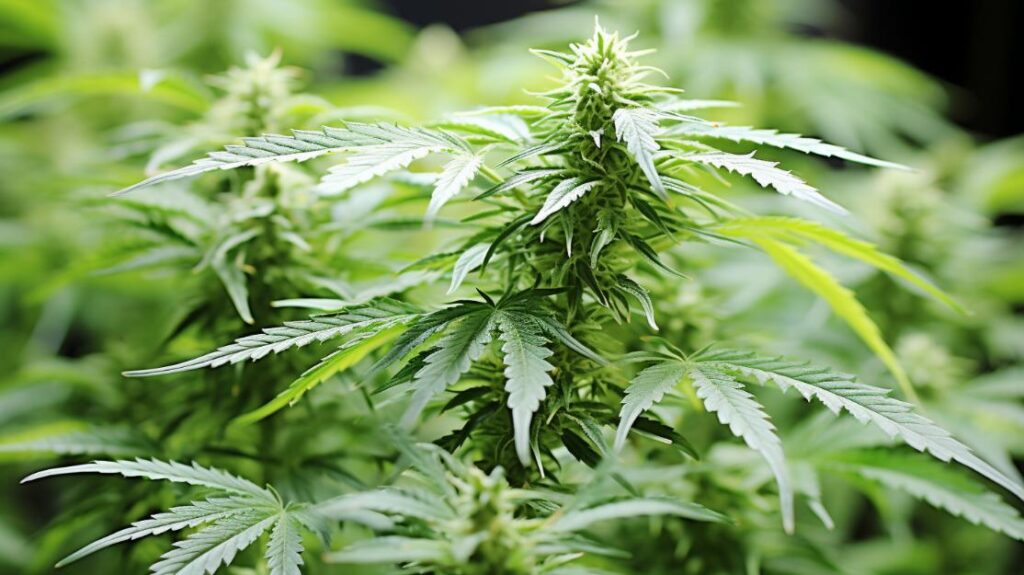
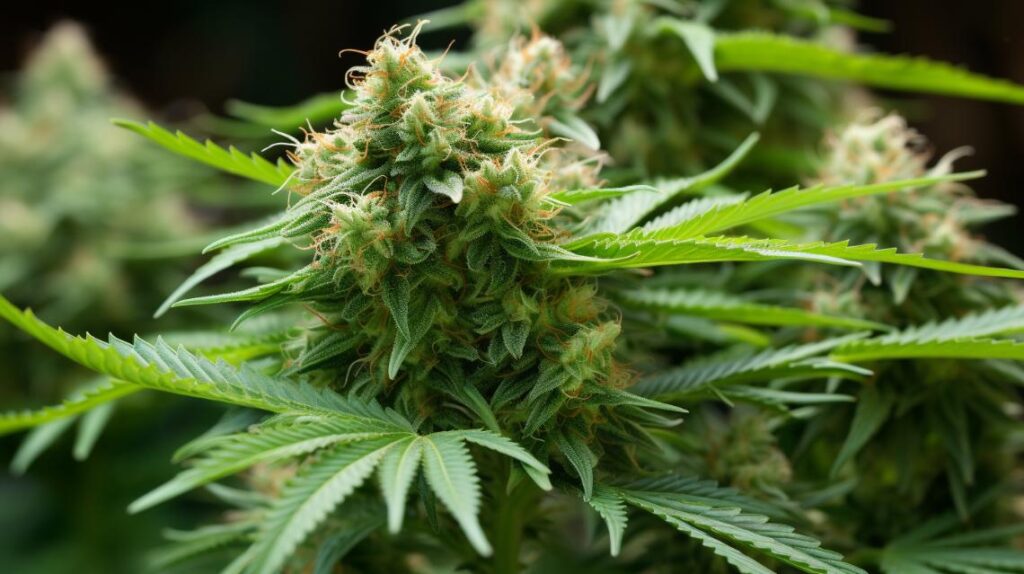
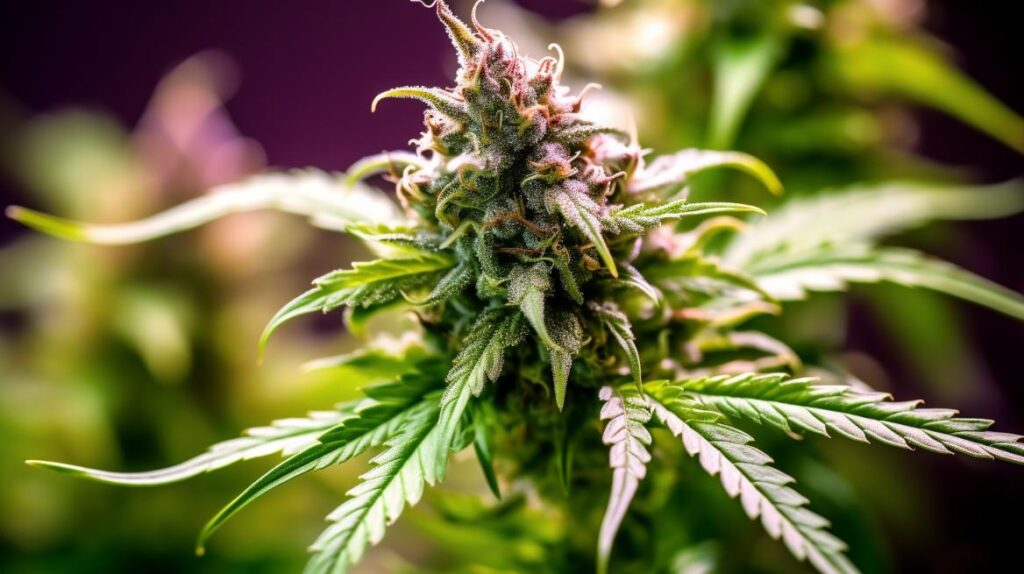
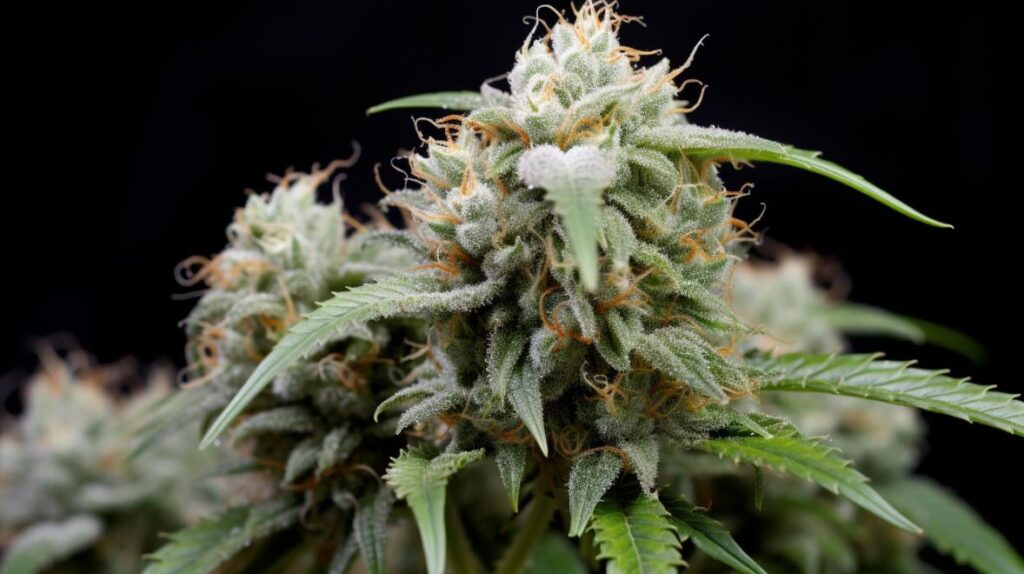
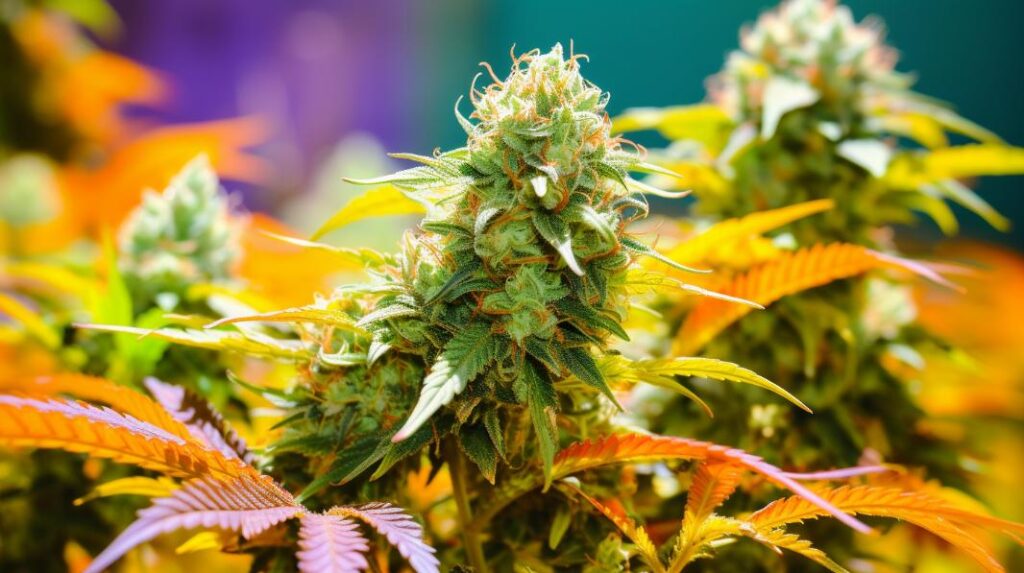

Responses